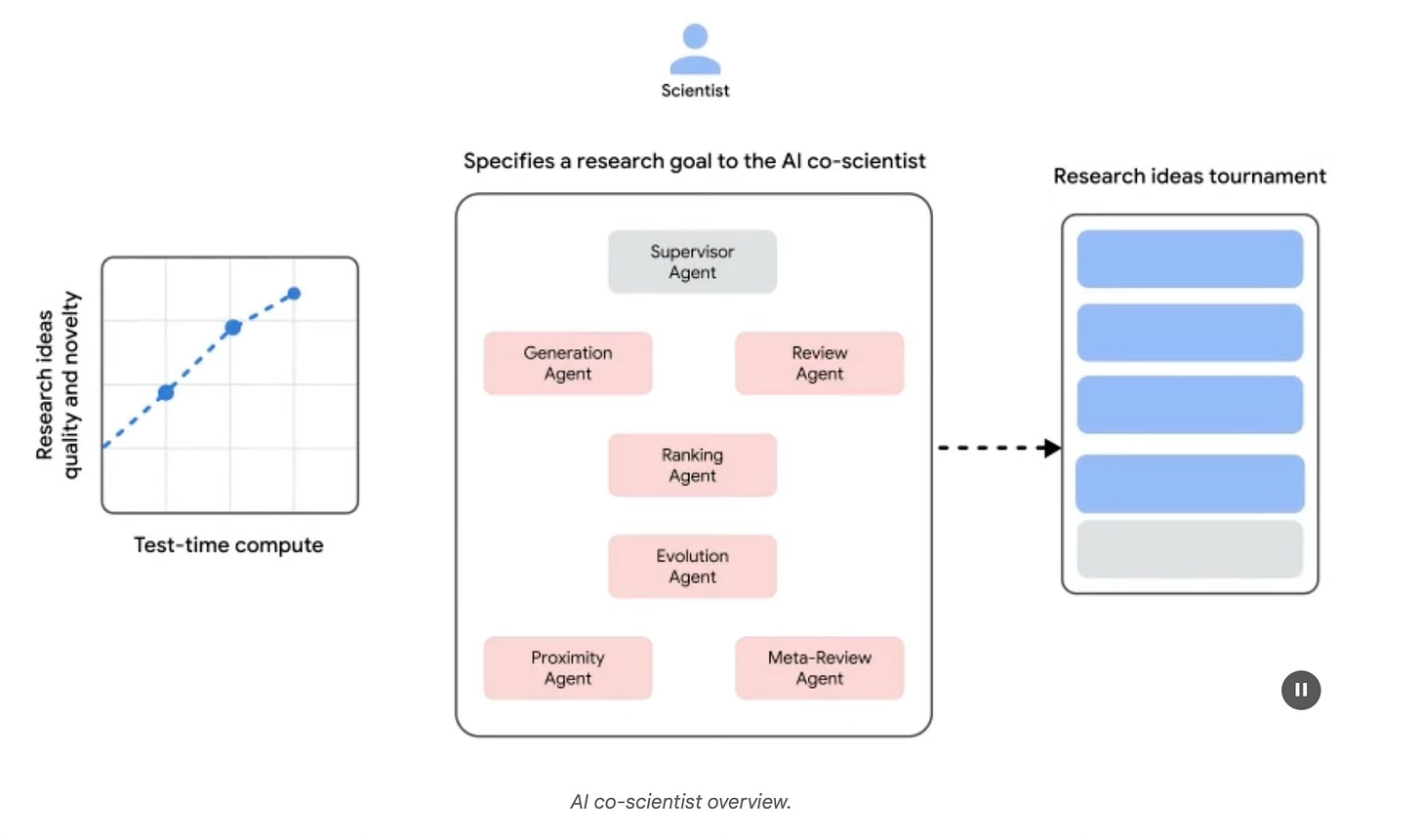From Lab to Boardroom: How Multi-Agent AI Is Redefining Research—and Reimagining the Modern Organization
Inside Google’s ‘AI Co-Scientist’ Breakthrough—and Why Every Sector Should (Em)Brace for a Paradigm Shift
I spent part of my weekend diving into Google’s new multi-agent “co-scientist” framework and let me tell you—it left me feeling the same kind of excitement I had when I first realized how data analytics could fundamentally change clinical decision-making. What’s unfolding goes well beyond a clever algorithm that just summarizes a few research papers. We’re talking about a network of specialized AI “agents” that can collectively handle deep scientific tasks, debate and refine each other’s ideas, and evolve promising leads into fully fleshed-out research proposals. This collaborative approach could end up being the playbook for how AI tackles complex challenges in virtually every field, not just the life sciences.
It’s easy to see why healthcare is the prime starting point. Anyone who’s worked in a hospital or biotech environment knows the sheer volume of data, protocols, and regulations. Imagine if instead of a single AI program that tries to do everything—like a general practitioner tasked with handling every case—we have a team of specialist agents, each with a unique focus. One agent might scan clinical trial databases, another could scrutinize the latest genomic research, and yet another might model the economic viability of a new therapy. Then there’s a supervisory agent orchestrating the entire ensemble, making sure the best ideas float to the top. If that model sounds familiar, it’s because it’s essentially how real-world medical teams already operate—just at a far faster, machine-driven clip.
But this same paradigm can shift the playing field in many other industries as well. In the short term, we might see controlled experiments where multi-agent AI handles areas like corporate strategy or supply chain logistics—each agent tackling one segment of the process, then coordinating their findings. Over time, these models could become fixtures in high-stakes sectors like finance, aerospace, or energy, enabling split-second decisions that adapt to evolving conditions on the ground. It’s like having an entire group of experts on call 24/7, each reviewing information from multiple angles and collectively deciding on the best course of action.
From my vantage point, particularly in healthcare and life sciences, the near-term potential is already huge. The idea of using AI teams to expedite tasks like drug repurposing or target discovery aligns with some of the core principles I laid out in MoneyBall Medicine, where leveraging data at scale can accelerate breakthroughs. That same concept ripples outward: real-time public health surveillance, adaptive clinical trials, and more precise personalized care. The result isn’t just speed; it’s the ability to synthesize evidence from a broad set of sources—something a single model, or even a single human expert, can find challenging to do well.
We’re likely to see some early deployments in specialized settings—labs at big pharma companies or cutting-edge research hospitals—where these multi-agent approaches fit neatly into an R&D pipeline. It’s not hard to imagine a future where these systems become so integrated that they handle everything from analyzing patient biomarkers in real time to suggesting novel therapeutic pathways. That could fundamentally reshape not just how quickly we develop treatments, but how flexibly we adapt those treatments to specific patient needs.
Looking ahead, the trajectory of AI makes me think this transformation could happen faster than most people expect. The leaps we’ve seen in large language models alone are a good indicator that multi-agent systems will rapidly grow more capable. Over the next few years, we might see these AI teams go from interesting curiosities to indispensable drivers of decision-making across multiple industries. By the end of the decade, it’s entirely plausible that multi-agent frameworks will be as commonplace as having a smartphone in your pocket.
Of course, that doesn’t mean the human element disappears. In fact, as I wrote about in The Future You, the best outcomes occur when technology augments human expertise rather than replaces it. We’ll still need healthcare professionals, policymakers, and industry specialists who understand how to guide AI systems, interpret their suggestions, and integrate them with the bigger picture of patient care or organizational strategy. And we’ll also need to ensure that privacy, ethics, and regulatory guidelines keep pace with technology.
Still, when I step back and look at the arc of my own career—whether it’s consulting on the biotech landscape or hosting conversations on my podcast with leaders at the forefront of AI—this moment feels pivotal. Google’s co-scientist project is a glimpse at how AI can graduate from a single-tool solution to a fully collaborative partner across multiple domains. The idea of specialized AI agents communicating, debating, and refining each other’s work could change the dynamics of research, product development, and even how we manage entire supply chains.
If this multi-agent model continues its current path, we may soon look at single “super AIs” the way we view an outdated cell phone—the kind you keep in a drawer because it just can’t match what a well-choreographed system of specialists can achieve together. The implications for science, medicine, and every other industry are nothing short of revolutionary. And just like those moments when we first realized how data analytics could transform entire sectors, we’re standing at the edge of another massive leap forward—one that could rewrite the rules of innovation for the next decade and beyond.

